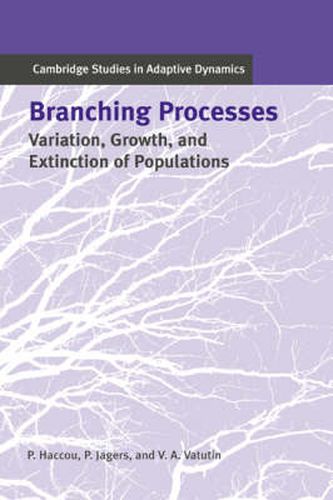Readings Newsletter
Become a Readings Member to make your shopping experience even easier.
Sign in or sign up for free!
You’re not far away from qualifying for FREE standard shipping within Australia
You’ve qualified for FREE standard shipping within Australia
The cart is loading…






Biology takes a special place among the other natural sciences because biological units, be they pieces of DNA, cells, or organisms, reproduce more or less faithfully. As for any other biological processes, reproduction has a large random component. The theory of branching processes was developed especially as a mathematical counterpart to this most fundamental of biological processes. This active and rich research area allows us to make predictions about both extinction risks and the development of population composition, and also uncovers aspects of a population’s history from its current genetic composition. Branching processes play an increasingly important role in models of genetics, molecular biology, microbiology, ecology, and evolutionary theory. This book presents this body of mathematical ideas for a biological audience, but should also be enjoyable to mathematicians.
$9.00 standard shipping within Australia
FREE standard shipping within Australia for orders over $100.00
Express & International shipping calculated at checkout
Biology takes a special place among the other natural sciences because biological units, be they pieces of DNA, cells, or organisms, reproduce more or less faithfully. As for any other biological processes, reproduction has a large random component. The theory of branching processes was developed especially as a mathematical counterpart to this most fundamental of biological processes. This active and rich research area allows us to make predictions about both extinction risks and the development of population composition, and also uncovers aspects of a population’s history from its current genetic composition. Branching processes play an increasingly important role in models of genetics, molecular biology, microbiology, ecology, and evolutionary theory. This book presents this body of mathematical ideas for a biological audience, but should also be enjoyable to mathematicians.